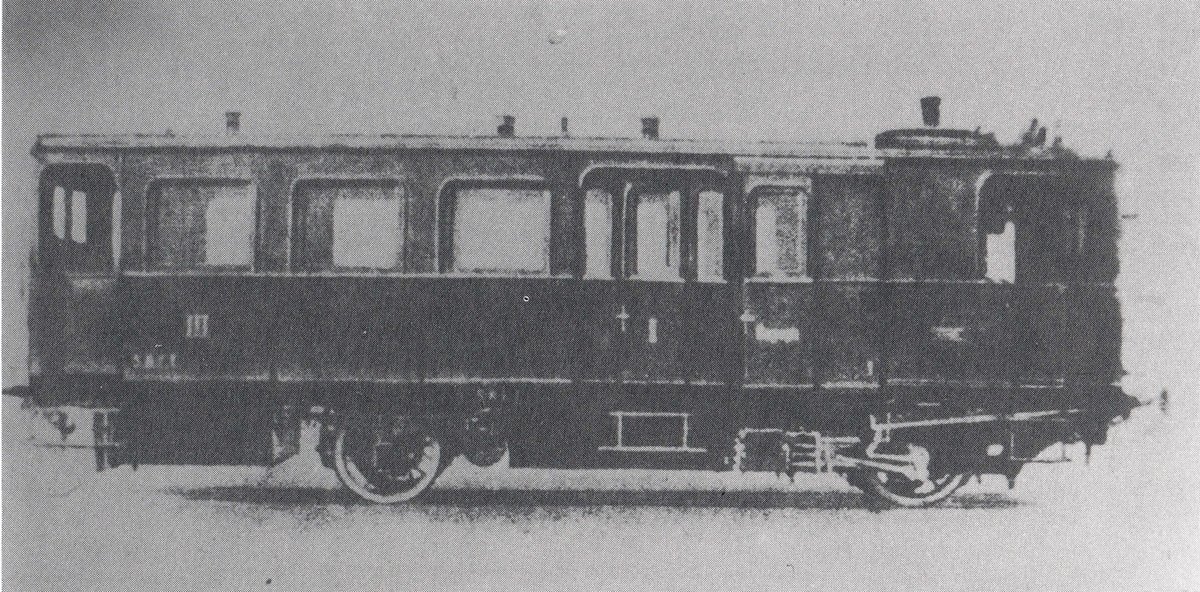In operating the new Iseo-Edolo railway, the SNFT had to consider the possibility of having to carry out a higher number of journeys per day than the minimum set out in the concession agreement. This was due to competition from means of transport pre-dating the railway around the lake along the Oglio river up to Cividate. It was decided to address this situation by carrying out some of the daily services with railcars, either by themselves or pulling one or two other cars, rather than running them all with locomotives. For this purpose, it would have chosen the type of steam railcar exhibited last year in Milan by Officine di Saronno, a type that had already benefited from experience on the Würthemberg railways. These had the notable distinction from the steam railcars that had been tested in Italy with unfavourable results of having a tube boiler, of a kind not dissimilar to that of the locomotives, which did not present any special difficulty of maintenance or repair.
Locomotive Class A1 and A2
- Ordinativo: 1907
- Costruzione: 1907
- Esercizio: 1907-1940ca
- Massa in servizio: Kg.21.000
- Rodiggio UIC: B
- Ruote motrici Ø: 1.000 mm
- Costruttore: Maschinenfabrik Esslingen / Officine di Saronno
- Lunghezza fuori tutto: 11.436 mm
- Altezza: 4.150 mm
- Corsa stantuffi: 220 mm
- Diametro cilindri: 300 mm
- Potenza: 80 CV
- Velocita massima: 42 Km/h
- Pressione di esercizio: 16 atm
- Superficie riscaldamento tot.: 35,09 m²
- Capacità casse acqua: 1,5 m³
- Alimentazione carbone: 0,45 m³
- Order: 1907
- Build date: 1907
- Service date: c.1907-1940
- Service mass: 21,000 Kg
- UIC wheel arrangement: B
- Diameter of the driving wheels: 1,000 mm
- Costruttore: Maschinenfabrik Esslingen / Officine di Saronno
- Lunghezza fuori tutto: 11.436 mm
- Altezza: 4.150 mm
- Corsa stantuffi: 220 mm
- Diametro cilindri: 300 mm
- Power: 80 hp
- Maximum speed: 42 Km/h
- Operating pressure: 16 atm
- Overall heating area: 35.09 m²
- Water tank capacity: 1.5 m³
- Coal supply: 0.45 m³
The railcar which has been chosen, and for which authorisation has been requested for use operating on the Iseo-Edolo railway, will be fitted with a Westinghouse air brake and steam heating, and will have a compartment for the vehicle’s boiler and motor, a baggage car, a 1st-class compartment with seating for 8 passengers, a 3rd-class compartment with seating for 29 passengers, and a platform for eight standing passengers. There are also two compartments under the chassis for parcels, goods and two kennels, etc… […] The chosen railcar can only travel in one direction. […]
The above is a brief summary of the report, dated 20 April 1907, relating to the decision to purchase these steam railcars. The units arrived in Iseo in 1909 and were in service until the old Brescia-Iseo section closed down, when they were transferred to Orbetello, where already by 1940 they were withdrawn from service and where they were heavily damaged in the war.
